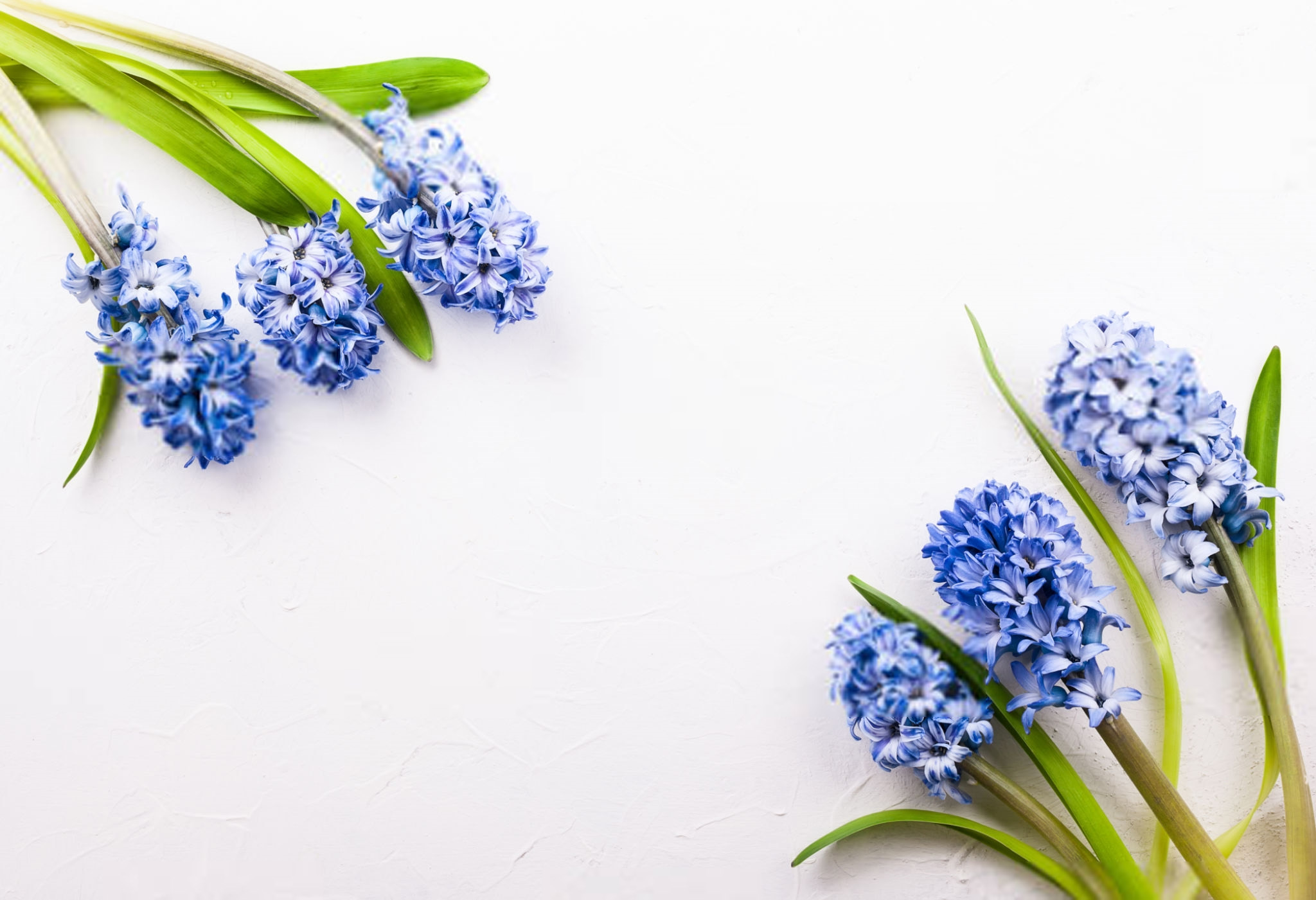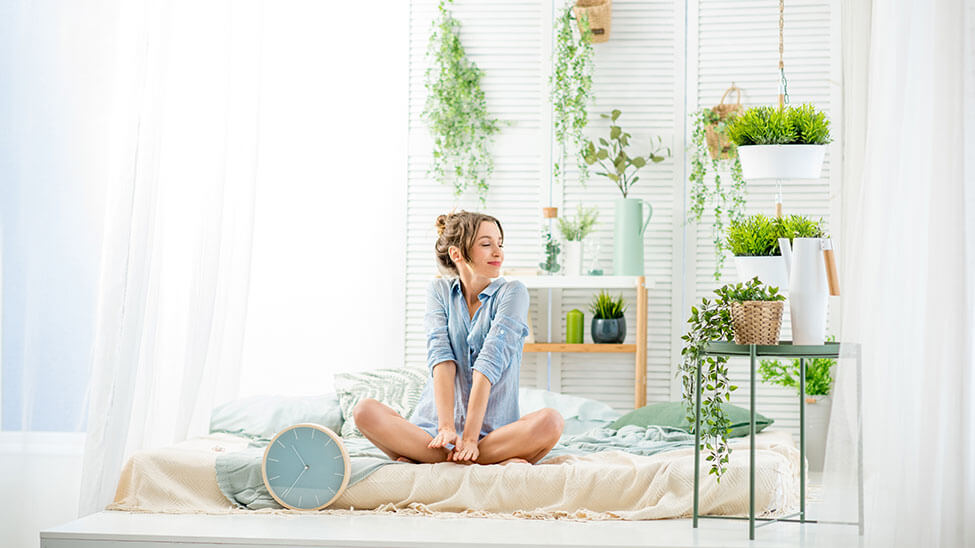
The battle against nocturnal madness
Before we get into the topic of bedroom plants, here’s a little digression on the subject of sleep. A healthy sleep is not only important for your personal well-being, but also for your health. Unfortunately, many people suffer from sleep disorders nowadays. According to a 2017 DAK health report, 80 percent of working people between the ages of 35 and 65 suffer from sleep disorders. One in ten is even affected by a severe sleep disorder, known as insomnia. This results in an increase of 60 percent compared to a study from 2010. Everyone knows that poor sleep leads to health problems in the long term. Nevertheless, about 70 percent of those affected do not seek treatment and prefer to resort to harmful sedatives. The most common causes of sleep problems include psychological causes such as stress and anger. Organic causes such as infections, digestive problems and sleep apnea (short pauses in breathing) also have a major impact on sleep quality. But external causes such as exposure to light, noise, heat in summer when there is no air conditioning, and poor sleeping conditions also affect the quality of sleep. What now of all things a few bedroom plants can do against this seemingly omnipresent problem, you will learn in the following.
Influence sleep with the right bedroom plants
If you suffer from sleep problems, you should take them seriously and find out the reason or reasons. In addition to medical care, you can also influence the first steps to healthy sleep yourself. It is not uncommon to achieve success by changing habits and adapting your sleep environment. The first step you can take is to improve the air quality in your bedroom. This has an enormous influence on the quality of your sleep. There should be enough oxygen and the lowest possible CO2 concentration while you sleep. In addition to good and sufficient ventilation, it is mainly the properly selected bedroom plants that help to keep the oxygen constant and reduce CO2. These not only look good, but also have a variety of different effects. Therefore, we give you valuable tips here, with which bedroom plants you can ensure a relaxing and perfect start to the day.
Our recommendations of bedroom plants
Lavender
Lavender is a plant species of the labiates family. You can use real lavender not only in the kitchen or in the fight against moths. But lavender has been used in aromatherapy for centuries due to its high essential oil content, making it an ideal candidate for our bedroom plants. The scent of lavender soothes and stimulates sensuality. In a study conducted by American scientists at the University of Miami Miller School of Medicine, it was proven that the scent of lavender had a calming effect on babies and helped guide them to a deeper stage of sleep.
Jasmine
True jasmine is a summer green climbing shrub that belongs to the olive family. It is notable for its white and fragrant flowers. Scientists have found out in a study that this exotic plant has calming properties that have a positive effect on body and soul. One’s worries are alleviated and lead to a better quality of sleep. In a bright bedroom, this genus of plants would probably have not only a high practical value, but also an aesthetic one.
Bow hemp
Bow hemp, also known as mother-in-law’s tongue, is a popular and easy-to-care-for houseplant that is among the most common of all bedroom plants. A study conducted by NASA looked at how plants can best clean the air in the space station. The bow hemp was confirmed as one of the best plants. Curved hemp filters household toxins such as formaldehyde and benzene from the air, contributing to a better indoor environment. In addition, this plant releases oxygen at night while absorbing carbon dioxide which leads to better air quality and better sleep.
Green lily
The green lily belongs to the asparagus family and is originally native to South Africa. Due to its frequent use in office spaces, the plant is also called civil servant grass or civil servant palm. However, the green lily is also excellent as one of our recommended bedroom plants. In fact, NASA scientists confirm that the green lily can remove something like 90% of the carcinogenic chemical formaldehyde from the air. Moreover, the plant absorbs odors and smoke, which makes it one of the best natural air purifiers for a restful sleep.
Aloe Vera
Aloe vera is one of the best and most famous natural wonder plants. This plant was originally cultivated mainly in subtropical and tropical areas, and to this day, due to its robustness and easy care, it is a very popular houseplant, not only, but also as one of many bedroom plants. Besides the aloe vera gel, which is mainly used cosmetically but also medicinally, aloe vera is considered one of the best air-improving plants. This miracle plant also releases oxygen at night, promoting a restful night’s sleep in the bedroom.
Orchid
Orchids are more delicate than some other flowers, but with the right amount of sun and water, they grow excellently and are very decorative. The orchid filters the air of pollutants found in wall paints and furniture varnishes such as xylene. Since it also produces oxygen at night, it is excellent for our selection of bedroom plants.
Monocot
The last representative of our recommended bedroom plants is the monocot, another plant that filters toxic substances from the air. Formaldehyde, benzenes and trichloroethylene are just a few substances that are filtered. The beautiful and eye-catching leaves of the monocot can increase the humidity of the bedroom by more than 5 percent. This can protect against dry nose and dry eyes. In addition, the high humidity kills germs in the air and promotes healthy sleep.










